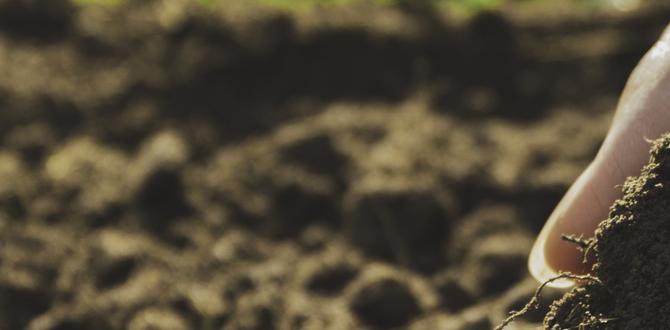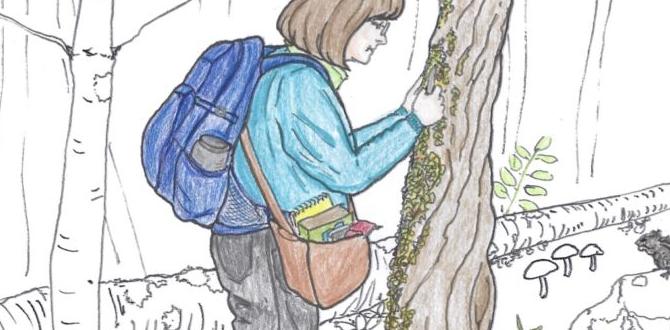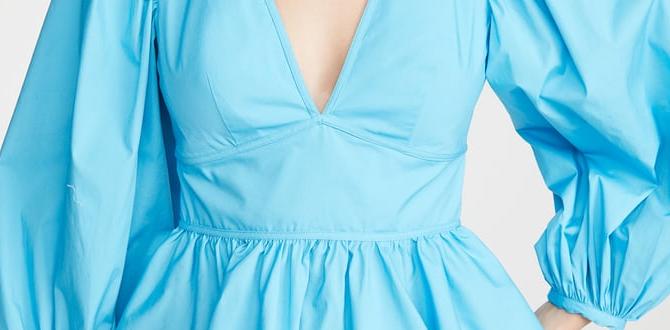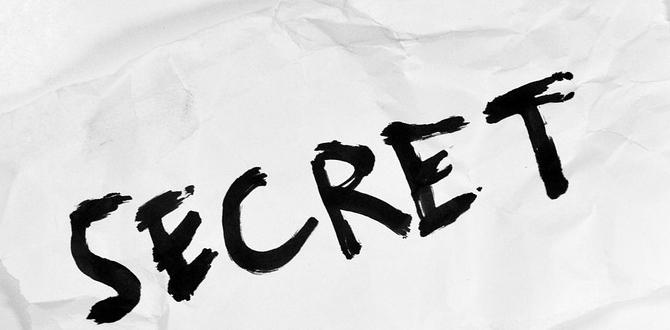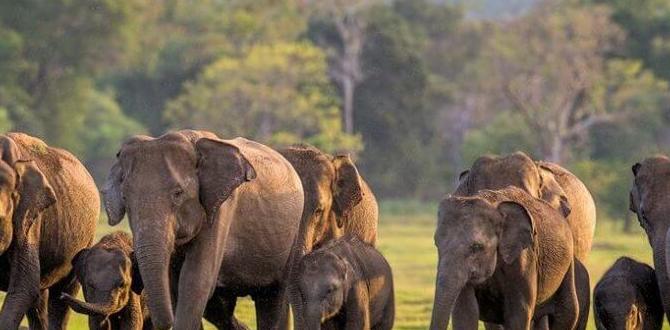Planning your first trip to Bohol? Here’s your essential guide to making it unforgettable! Discover hidden gems, practical advice, and tips for comfort and ease, so you can explore this Philippine paradise with confidence and a smile.
Hey travelers! Michael C. Herrera here from Journey Essentials. Dreaming of the Philippines? Bohol is a dream destination! Imagine white-sand beaches, unique natural wonders, and incredible adventures. But if it’s your first time, you might wonder where to start. Don’t worry! Planning a trip can feel overwhelming, but it doesn’t have to be.
I’ve put together some simple, practical tips to help you navigate Bohol like a seasoned pro. We’ll cover everything from getting around to what to pack, ensuring your adventure is as smooth and comfortable as possible. Get ready to discover the magic of Bohol without any stress!
Your Compass for Bohol: Essential Tips for First-Timers
Bohol is an island paradise in the Philippines that captivates visitors with its stunning natural beauty and rich cultural heritage. From the iconic Chocolate Hills to the adorable Tarsiers, it offers a unique blend of adventure and relaxation.
As a first-time visitor, organizing your trip can seem daunting, but with the right preparation, your Bohol experience will be seamless and memorable. This guide is designed to equip you with the essential knowledge to make the most of your journey, ensuring comfort, practicality, and pure enjoyment.
1. Getting to Bohol: Your Gateway to Paradise
The primary gateway to Bohol is the Bohol–Panglao International Airport (TAG), located in Panglao. This modern airport serves flights from major hubs like Manila and Cebu. If you’re coming from international destinations, you’ll likely fly into Ninoy Aquino International Airport (NAIA) in Manila or Mactan-Cebu International Airport (CEB) in Cebu and then take a connecting flight to Tagbilaran.
Alternatively, ferries are a scenic and often more affordable way to reach Bohol. Major ferry companies like OceanJet and SuperCat operate routes from Cebu City to Tagbilaran City Seaport. The ferry ride typically takes about two hours and offers beautiful ocean views. Booking your tickets in advance, especially during peak season, is highly recommended.
2. Best Time to Visit Bohol: Sunshine and Gentle Breezes
Bohol enjoys a tropical climate, meaning it’s warm year-round. However, there are specific periods that offer the most pleasant weather for sightseeing and beach activities.
- Dry Season (December to May): This is generally considered the best time to visit Bohol. You’ll experience plenty of sunshine, lower humidity, and minimal rainfall. May can get quite hot.
- Wet Season (June to November): Expect intermittent rain showers, often heavy but usually short-lived. This season is less crowded and can offer lower prices on accommodation and flights. However, typhoons can occur, potentially disrupting travel plans.
For first-timers, aiming for the dry season, particularly from December to March, provides the most predictable and enjoyable weather for exploring all that Bohol has to offer.
3. Getting Around Bohol: Navigating the Island with Ease
Once you’re in Bohol, exploring the island is part of the adventure. Several transportation options are available to suit different needs and budgets:
- Tricycles: These are the most common mode of transport for short distances within towns and cities. They are great for getting to your accommodation from the airport or seaport, or for short hops around Tagbilaran or Panglao.
- Motorcycle Taxis (Habal-habal): For longer journeys or for solo travelers, habal-habal drivers offer a convenient way to get around. Always agree on the fare beforehand.
- Rentals (Motorbikes/Cars): Renting a motorbike or a car gives you the freedom to explore at your own pace. This is ideal for independent travelers who want to visit attractions off the typical tourist routes. Always ensure you have the necessary permits and insurance, and wear a helmet for safety. Familiarize yourself with local traffic rules.
- Tours and Vans: Many tour operators offer day tours to the major attractions like the Chocolate Hills, Tarsier Sanctuary, and Loboc River Cruise. Hiring a private van with a driver is a comfortable option for groups or families wishing for a personalized itinerary.
For easier planning, consider booking a Bohol countryside tour package. These often include transportation, entrance fees, and sometimes lunch. You can often arrange these through your hotel or local tour agencies.
4. Must-See Attractions in Bohol: Nature’s Masterpieces and Cultural Gems
Bohol is brimming with sights that will leave you in awe. Here are some absolute must-sees for any first-timer:
- Chocolate Hills: These are Bohol’s most famous landmarks. Approximately 1,268 uniformly shaped hills dot the landscape, resembling giant chocolate kisses. They turn brown during the dry season, hence the name. The viewing deck at the Chocolate Hills Complex offers the most iconic panorama.
- Philippine Tarsier Sanctuary: Get up close with the world’s smallest primates. These tiny, nocturnal creatures have huge eyes and are incredibly sensitive. Visit the officially recognized sanctuaries to ensure you’re supporting ethical tourism practices. Remember to be quiet and avoid flash photography.
- Loboc River Cruise: Enjoy a relaxing lunch buffet onboard a floating restaurant as you cruise along the scenic Loboc River. The journey often includes stops to watch local cultural performances.
- Panglao Island Beaches: Famous for its powdery white sands and clear turquoise waters, Panglao is a hub for beach lovers. Alona Beach is the most popular and developed, while Dumaluan Beach offers a more tranquil atmosphere.
- Bohol Bee Farm: Experience organic living and sample delicious homemade ice cream and healthy snacks made from local ingredients. It’s also a great place to learn about sustainable farming.
- Baclayon Church: One of the oldest stone churches in the Philippines, Baclayon Church is a national historical landmark. Its coral stone walls and centuries-old artifacts offer a glimpse into Bohol’s colonial past.
- Man-Made Forest of Bilar: Drive or cycle through this dense, two-kilometer stretch of mahogany trees. The cool shade and natural beauty make it a unique photo opportunity.
5. Packing Essentials for Your Bohol Adventure
Packing smart makes a world of difference to your travel comfort. Here’s a checklist of essentials for your Bohol trip:
- Lightweight Clothing: Cotton or linen fabrics are ideal for the tropical heat. Pack shorts, t-shirts, sundresses, and comfortable walking clothes.
- Swimwear: Essential for enjoying Bohol’s beautiful beaches and resorts.
- Sun Protection: High SPF sunscreen, a wide-brimmed hat, and sunglasses are crucial. The sun can be intense.
- Insect Repellent: Especially important for evenings and if you plan to visit natural areas.
- Comfortable Footwear: Flip-flops or sandals for the beach, and comfortable walking shoes or trainers for exploring.
- Light Rain Jacket or Poncho: Useful during the wet season or for unexpected showers.
- Waterproof Bag: To protect your electronics and valuables from splashes around waterfalls or boat trips.
- Basic First-Aid Kit: Include any personal medications, bandages, antiseptic wipes, and pain relievers.
- Reusable Water Bottle: Stay hydrated and reduce plastic waste.
- Power Bank: To keep your devices charged on the go.
- Travel-Sized Toiletries: While hotels provide some, it’s good to have your preferred brands.
- For Parents: Child Diapers and Wipes. Traveling with little ones requires extra preparedness. Pack enough child diapers and wet wipes to ensure your child’s comfort throughout the journey and during your adventures. Having a reliable supply means fewer worries and more focus on enjoying family time. Consider travel-sized packs or disposable options for convenience.
- For Adults: Adult Diapers or Protective Underwear. For adults traveling with specific personal care needs, ensuring comfort and discretion is paramount. Pack appropriate adult diapers or protective underwear. Choosing breathable, absorbent, and comfortable options can significantly enhance your experience, especially on long travel days or during activities. Journey Essentials focuses on solutions that offer reliability and peace of mind, so you can explore freely.
6. Food and Drink: A Taste of Bohol
Bohol offers a delightful culinary scene, blending Filipino staples with fresh, local ingredients. Don’t miss trying:
- Kinilaw: This is the Filipino version of ceviche, usually made with fresh raw fish marinated in vinegar, ginger, onions, and chili. deliciously refreshing!
- Seafood: Being an island, Bohol boasts an abundance of fresh seafood. Grilled fish, prawns, and squid are readily available and incredibly tasty.
- Halo-Halo: A popular Filipino dessert made with shaved ice, milk, sweet beans, fruits, jelly, leche flan, and topped with ice cream. Perfect for cooling down.
- Local Fruits: Mangoes, bananas, and coconuts are deliciously fresh and readily available.
Important Tip: Stick to bottled water or purified water. While many resorts and restaurants offer safe drinking water, it’s always best to be cautious with tap water in any new destination to avoid stomach upsets. Ensure you’re well-hydrated throughout your stay.
7. Budgeting for Your Bohol Trip
Bohol can cater to various budgets, from backpacker-friendly to luxury. Here’s a breakdown of common expenses:
| Category | Estimated Cost (PHP) | Notes |
|---|---|---|
| Accommodation | 500 – 5000+ per night | Hostels, guesthouses, mid-range hotels, luxury resorts |
| Food | 300 – 1500+ per day | Local eateries, mid-range restaurants, fine dining |
| Transportation | 100 – 1000+ per day | Tricycles, habal-habal, motorbike rental, van rental |
| Attraction Entrance Fees | 50 – 500+ per attraction | Chocolate Hills, Tarsier Sanctuary, etc. |
| Activities (e.g., massage, snorkeling) | 200 – 1000+ | Highly variable |
Pro Tips for Saving Money:
- Eat at local carinderias (small eateries) for affordable and authentic Filipino meals.
- Travel during the shoulder season (just before or after the peak dry season) for potential discounts on flights and accommodation.
- Group tours can be more cost-effective than hiring private transport for every trip.
- Negotiate prices for tricycle rides, especially for longer distances. Always agree on the fare before starting your journey.
8. Safety and Health Tips for a Worry-Free Trip
Bohol is generally a safe destination, but practicing basic safety and health precautions will ensure a smooth trip:
- Stay Hydrated: Drink plenty of bottled or purified water, especially in the heat.
- Food Safety: Eat at reputable establishments. If you have a sensitive stomach, be mindful of street food.
- Sun Protection: Apply sunscreen regularly, wear hats, and seek shade during the hottest parts of the day.
- Petty Theft: Be aware of your surroundings and keep valuables secure, especially in crowded areas.
- Motorbike Safety: If renting a motorbike, wear a helmet and drive cautiously, as local traffic can be unpredictable. Ensure you have adequate travel insurance.
- Respect Local Customs: Dress modestly when visiting churches or religious sites.
- Travel Insurance: It’s always wise to have comprehensive travel insurance that covers medical emergencies and trip cancellations.
For a comprehensive overview of health advice when traveling to the Philippines, the Centers for Disease Control and Prevention (CDC) is an excellent resource.
9. Connectivity: Staying in Touch
Wi-Fi is available in most hotels, cafes, and restaurants, though speeds can vary. For consistent connectivity, consider purchasing a local SIM card upon arrival at the airport or in Tagbilaran City. Globe and Smart are the main providers. Pre-paid SIM cards with data packages are affordable and widely available. This will be invaluable for navigation, communication, and sharing your amazing Bohol moments instantly.
10. Responsible Tourism: Preserving Bohol’s Beauty
As visitors, we have a role in protecting Bohol’s natural and cultural resources. Practice responsible tourism by:
- Minimizing Waste: Avoid single-use plastics. Carry reusable bags and water bottles.
- Respecting Wildlife: Do not feed or touch the animals. Maintain a safe distance, especially at the Tarsier Sanctuary.
- Supporting Local Communities: Buy souvenirs from local artisans and eat at local establishments.
- Conserving Water and Energy: Be mindful of your usage in accommodations.
- Respecting Marine Life: Avoid touching coral reefs when snorkeling or diving.
Conclusion
Your first trip to Bohol will undoubtedly be an experience filled with wonder and discovery. With this beginner’s guide, you’re well on your way to navigating the island with confidence. From the mesmerizing Chocolate Hills to the serene beaches of Panglao, Bohol offers a tapestry of experiences for every traveler.
Remember to pack smart, stay prepared for the tropical climate, and embrace the warm hospitality of the Filipino people. Whether you’re a solo adventurer, a family with young children needing reliable child diapers, or an adult prioritizing comfort with adult diapers, focusing on practicalities like proper packing and staying hydrated ensures
Frequently Asked Questions
Q1: What’s the best way to get around Bohol for a solo traveler?
A1: For solo travelers, a combination of motorbikes (if you’re comfortable riding) and tricycles for shorter distances is very flexible. Alternatively, booking organized day tours is convenient and can be cost-effective for seeing major sights.
Q2: Is Bohol expensive for first-time visitors?
A2: Bohol offers a range of options. You can travel affordably by staying in guesthouses, eating at local eateries, and using public transport or shared tours. However, if you opt for luxury resorts and private tours, it can be more costly. Overall, it’s considered quite affordable compared to many other tourist destinations.
Q3: What should I pack for a beach trip to Panglao?
A3: Definitely swimwear, light clothing, sun protection (sunscreen, hat, sunglasses), insect repellent, a reusable water bottle, and comfortable flip-flops or sandals. A waterproof bag is also handy for beach activities.
Q4: Is it safe to drink tap water in Bohol?
A4: It’s generally not recommended to drink tap water directly. Stick to bottled water, purified water provided by your accommodation, or water from reputable food establishments to avoid potential stomach issues.
Q5: What are the must-try local dishes in Bohol?
A5: You must try ‘Kinilaw’ (Filipino ceviche), fresh grilled seafood, and if you have a sweet tooth, the famous ‘Halo-Halo’ for dessert. Don’t forget to try the Bohol Bee Farm’s organic ice cream!
Q6: How much cash should I bring? Can I use credit cards?
A6: While larger hotels, restaurants, and tour operators in main tourist areas accept credit cards, smaller establishments, local markets, and tricycle drivers often only accept cash. It’s wise to carry a good amount of cash (Philippine Pesos) for daily expenses. ATMs are available in Tagbilaran and Panglao, but it’s good to have cash on hand for convenience.
Q7: Are there any specific travel requirements for Bohol due to COVID-19?
A7: Travel requirements can change. It’s crucial to check the latest guidelines from the Philippine government and the local Bohol tourism office before your trip. This might include vaccination status, testing requirements, or health declaration forms. Staying updated via official government sites ensures a smooth entry and stay.


